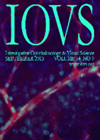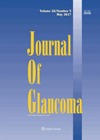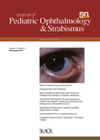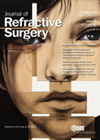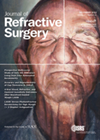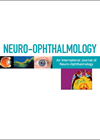
Journal Reviews archive for April 2014
Improved vision with perceptual learning
This study examined whether the development of crowded near visual acuity can be stimulated and whether crowding effects can be reduced by perceptual learning. The authors compared a magnifier crowded task with a perceptual learning crowded task and perceptual learning...
Vision measurements vs. self-rating
The aim of this study was to evaluate the association between self-rated vision status and tests of visual acuity, contrast sensitivity, stereoacuity, bilateral visual field and self-reported visual function in specific domains of near and far vision. The goal was...
Macular thickness and visual fields
The authors describe a comparison of spectral domain OCT with Humphrey visual fields (HVF) mean deviation (MD) and pattern standard deviation (PSD), examining the retinal thickness of the macula and circumpapillary retinal nerve fibre layer (RNFL) defects. Seventy-three subjects who...
Arterial stiffness and PEX
The authors describe a study of 25 newly diagnosed patients with pseudoexfoliation glaucoma (PEX) and 25 controls to evaluate carotid femoral pulse wave velocity (CF-PWV) values. The CF-PWV was assessed using a noninvasive device by measuring the pulse transmit time...
High myopes with POAG and IOP fluctuations
The authors describe a prospective study of 80 eyes of Chinese patients with primary open-angle glaucoma (POAG) on prostaglandin analogues to investigate if those who also have high myopia exhibit greater short-term intraocular pressure (IOP) fluctuations at resting conditions over...
Intermittent exotropia
Four cases of intermittent exotropia are discussed. Case 1 was a nine-month-old with cycloplegic refraction of +1.0DS and a 30PD intermittent exotropia at near and distance. Discussions considered observation, part-time occlusion, refractive correction and later possibility of surgery. Case 2...
Risk factors for amblyopia
The author presents a meta-analysis of published data to estimate American Association for Pediatric Ophthalmology and Strabismus (AAPOS) prevalence data for amblyopia risk factors. He extracted data from major paediatric comprehensive eye examination studies for children aged two to five...
Amblyopia OCT results
The authors compared the macular and peripapillary retinal nerve fibre layer (RNFL) thicknesses of amblyopic and fellow eyes using Stratus optical coherence tomography (OCT) to reveal any differences. They sought to determine the anatomical differences between these subtypes of strabismic...
Surgical prediction in infantile ET
The purpose was to evaluate the preoperative factors influencing the efficacy of the surgical procedure of bilateral lateral rectus recessions. Fifty cases with at least one year follow-up were included for retrospective analysis. Mean response to surgery was 2.17±0.80 PD/mm...
Prostaglandin levels in femto cataract surgery
Following previous reports of pupil size decrease after femtosecond treatment, the authors compare levels of prostaglandins in patients undergoing femtosecond assisted cataract surgery with those having routine cataract surgery. Patients with inflammatory eye disease, previous trauma surgery, age-related macular degeneration...
High-fluence collagen cross-linking
The authors treat seven eyes with progressive keratoconus with a high energy (18mW) for five minutes delivering a total energy similar to that suggested by the original Dresden protocol (3mW for 30mins). All eyes had a thickness >400µm following epithelial...
Case reports of neuro-ophthalmological complications of CIPD
The authors present three cases of neuro-ophthalmological complications of chronic inflammatory demyelinating polyradiculoneuropathy (CIPD). CIPD can lead to prominent nerve hypertrophy which can mimic other forms of neuropathy radiologically. In addition, complications can occur which can cause diagnostic difficulties. All...

